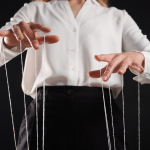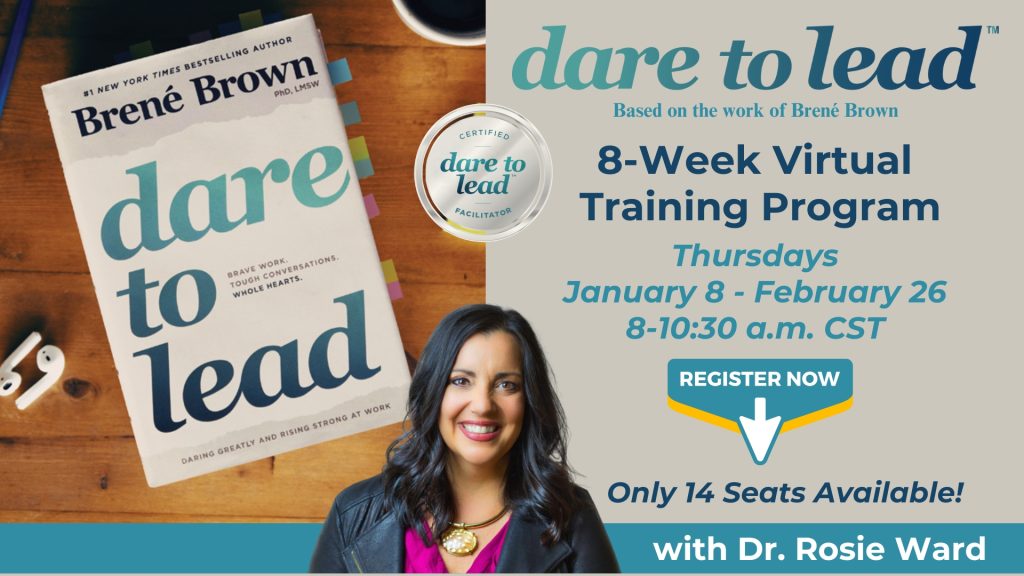Most of us have likely heard of the iceberg analogy – where what we see on the surface is only about 10% of what is really going on beneath the surface (that we can’t see). In other words, only our behaviors are visible to others (and sometimes ourselves). However, what ultimately guides our behaviors and lies underneath the surface is hidden and many times messy:
 Thoughts
Thoughts- Feelings
- Mindsets
- Beliefs
- Meaning-making systems
- Core identities (which include met and unmet needs, values, dreams, fears, and purpose)
In their book Mastering Leadership, Robert Anderson and William Adams describe two games of leadership:
- The Inner Game (a.k.a. our Inner Operating System). This game consists of what drives us; our internal beliefs and assumptions that make up our identity and guide our actions; the meaning-making system that we use to make sense of the world; how we analyze and make decisions; and our level of self-awareness and emotional intelligence. This is the 90% of the iceberg that is below the surface.
- The Outer Game (a.k.a. Leadership Practices). This consists of our domain knowledge, experience, managerial capability, leadership competencies, and behavior; it is the 10% of the iceberg that we can see.
Although the outer game is where most of us spend most of our time (and it is important), the inner game runs the outer game. “Mastery in anything is a well-honed outer game arising on a highly mature inner game.” Most approaches to development and change focus on the outer game; consequently, the results tend to be mediocre at best and short-lived. Sustainability requires tending to the messiness to strengthen the inner game FIRST and then refine the outer game.
Knowing What Zone We’re In
Herein lies the challenge…our world continues to be disruptive; living, learning and leading in this VUCA (volatile, uncertain, complex, and ambiguous) environment requires a different mindset and approach than what works for us during times of familiarity and certainty. However, under times of stress, pressure and all that comes with VUCA, we are biologically wired to self-protect and act in ways that protect our core identities at the root of our icebergs.
The problem is that IT DOESN’T WORK! This biological hardwiring prevents us from having the impact we want to have and impedes our overall effectiveness.
If you haven’t yet picked up a copy or read the new book from McKinsey & Company, Deliberate Calm: How to Learn and Lead in a Volatile World, we highly recommend getting it. The authors powerfully describe how and why we get in our own way – and what we can do about it. First and foremost, we have to know what zone we are in: familiar or adaptive.
| Familiar Zone | Adaptive Zone |
|
|
More and more, our VUCA world is putting us into the Adaptive Zone, and leaders and organizations are finding themselves struggling to find a productive path forward to be effective in this environment. This is due to what the Deliberate Calm authors call this the “adaptability paradox”… at the very moment when we most need to break free from our habitual patterns, we are unable to do so.
Think about an iceberg; it is hard and rigid. As humans, we are like the frozen water that makes up an iceberg when we react out of stress and fear; we can’t bend or adapt to meet the present challenges. We aren’t open to learning, can’t think creatively and ultimately can’t implement new ways of doing things.
We believe this growing gap between what our VUCA world is demanding of us and our own human DNA and hardwiring is at the root of so many of the challenges we face today.
“Adaptability, learning, innovation & creativity are most challenging in high-stakes, uncertain situations –
exactly when they are most needed…The human brain is wired to react to these situations with the exact opposite
of learning and creativity.”
The good news is that when we are aware of the hidden iceberg that holds our habitual, self-protective patterns, we can melt it so that our iceberg becomes fluid and malleable like water itself; we are able to transform into something new and different.
Just imagine if we had the ability to open our minds at these critical moments and respond with curiosity, creativity and collaboration instead of shutting down. It can be done!
Reconciling the Gap Between Our VUCA World and Our Human Biology
Here are some things you can do to start reconciling the gap and equip people to navigate disruption and stress with greater calm, clarity and agility.
- Revisit Your Leader/People Development Strategy – conduct a short audit of what you provide for developing leaders of all levels within your organization. Do you primarily focus on Outer Game stuff and ignore or skip over the Inner Game? If you’re not tending to the inner game FIRST (the 90% of the iceberg beneath the surface), it’s time to reconfigure your approach and offerings.
- Normalize the Messiness of Being Human – realize that people aren’t intentionally trying to be difficult. It’s our hardwiring to protect ourselves that is getting in our way. Leverage core and common tools and language to help people normalize and name it when their humanity gets the best of them. For example, in the work we do with teams, we will use the language of being Below the Line or armored to help people own it when they’ve shown up in a self-protective, unproductive way.
- Create Fearless Environments – inner game and adaptive zone work can’t happen without an environment of psychological safety. When we create safe spaces, it’s easier for people to lean into the discomfort required to do the work to strengthen their inner game of leadership and effectively navigate the challenges in the Adaptive Zone. Start normalizing messing up and model asking for help. On our team, we do an end-of-week reflection on Fridays and include “F-Up Fridays” where we share our biggest missteps and challenges from the week – and the valuable lessons they brought us.
- Own and Rewrite Self-Limiting Stories – as human beings, we make sense of our experiences by creating narratives and stories; and, in the absence of data, our brains fill in the space with stories. So the more we can acknowledge and own that we’re telling ourselves a story (vs. running with it as fact), we open up our ability to fact check our story and be more curious about its accuracy. Start using the language, “The story I’m telling myself is…” and then see how you could check out if that story is actually true or not. Remember, just because we have a thought doesn’t mean it is true; we need to stop believing everything we think and start building our muscle to pause and reflect before we act.
Stay HUMAN. Stay connected. Stay safe. Show Up as a Leader.







